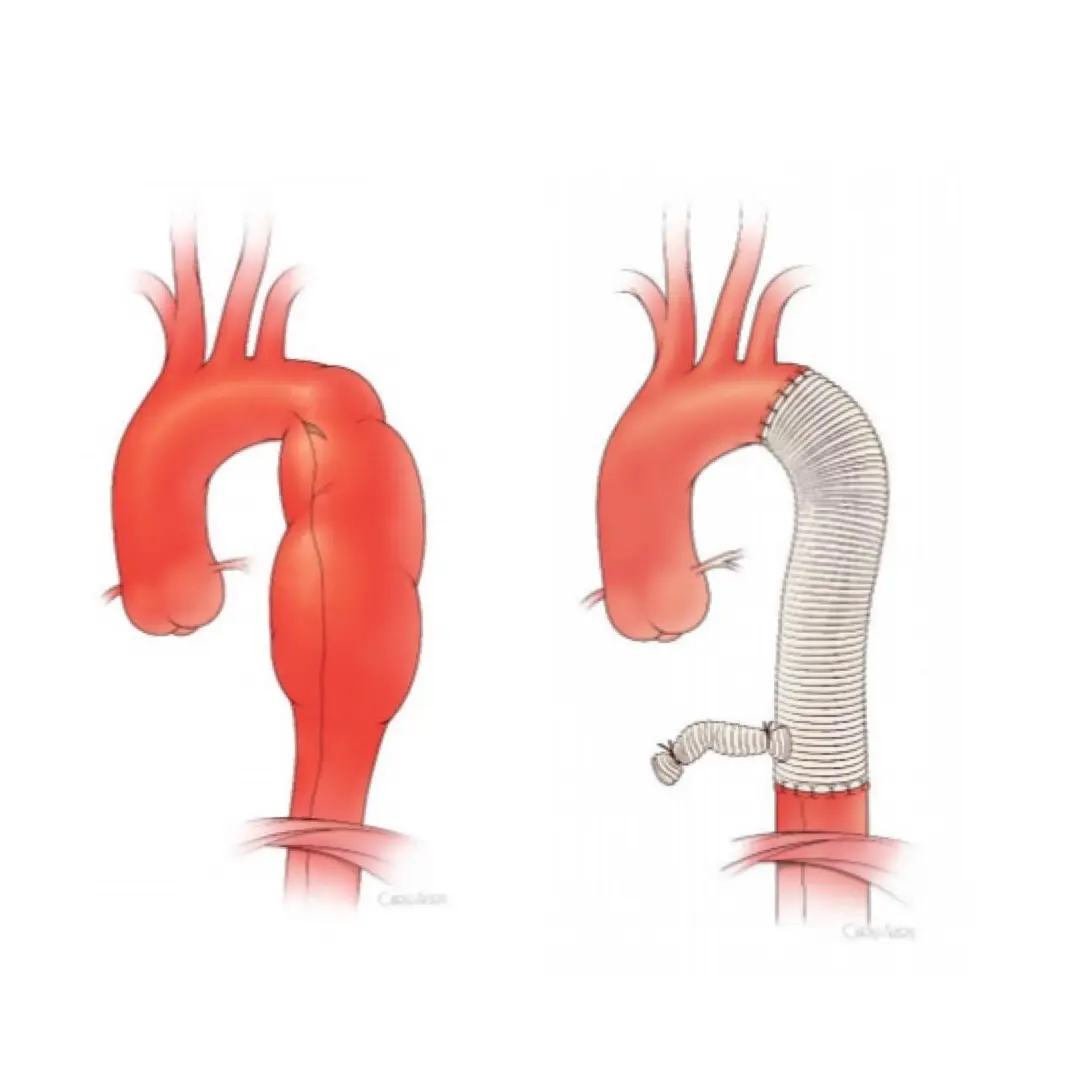Thoracic Endovascular Aortic Repair (TVAR)
An In-Depth Guide to Procedure, Indications, and Outcomes

What is TVAR?
Thoracic Endovascular Aortic Repair (TVAR) is a minimally invasive procedure used to treat conditions of the thoracic aorta, including aneurysms, dissections, and traumatic injuries. By placing a stent graft within the aorta, TVAR helps to stabilize the vessel and prevent complications such as rupture or further dissection.
Key Differentiators
- Minimally invasive procedure with smaller incisions
- Shorter recovery time compared to traditional open surgery
- Effectively treats thoracic aortic aneurysms and dissections
- Utilizes advanced imaging for precise stent graft placement
Indications for TVAR
TVAR is commonly indicated for:
- Thoracic Aortic Aneurysms: Bulging or weakened areas in the thoracic aorta
- Aortic Dissections: Tears in the inner wall of the aorta
- Traumatic Aortic Injuries: Often resulting from motor vehicle accidents or falls
- Penetrating Atherosclerotic Ulcers: Damage caused by plaque erosion
How is TVAR Performed?
The TVAR procedure involves the following steps:
- Access: Small incisions are made in the groin to access the femoral arteries.
- Catheter Navigation: A catheter is guided through the arteries to the thoracic aorta using advanced imaging.
- Stent Graft Placement: The stent graft is deployed to reinforce the damaged area of the aorta.
- Closure: The catheter is removed, and the incisions are closed.
Benefits of TVAR
- Less invasive compared to open surgery
- Reduced risk of infection and blood loss
- Shorter hospital stay and faster recovery
- Effective in managing life-threatening thoracic aortic conditions
Risks and Complications
While TVAR is generally safe, potential risks include:
- Endoleak: Blood leaking around the stent graft
- Stent Migration: Movement of the stent from its intended position
- Infection: Rare but possible at the incision site
- Blood Clots: Formation of clots in the treated area
Recovery After TVAR
Key aspects of recovery include:
- Monitoring in the hospital for 1-2 days post-procedure
- Gradual resumption of daily activities within 2-4 weeks
- Regular imaging follow-ups to ensure stent graft stability
- Medications to manage blood pressure and prevent complications
Conclusion
TVAR is a cutting-edge procedure that offers a life-saving option for patients with thoracic aortic conditions. Its minimally invasive nature, combined with high success rates, makes it a preferred choice for many patients and healthcare providers.